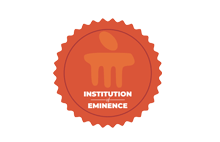Landfill leachate treatment by incorporating MWCNTs assisted adsorption and coagulation process
Document Type
Article
Publication Title
Emergent Materials
Abstract
Landfill leachate generation due to unscientific solid waste management seriously threatens soil, groundwater, and surface water. The biological treatment system alone is insufficient to remediate this dark-colored liquid and requires appropriate physicochemical methods as pre-treatment. This study evaluates the efficiency of coagulation, adsorption, and a combination of both to remove color and chemical oxygen demand (COD). Two common chemicals, alum and ferric chloride, were conventionally used as coagulants and multi-walled carbon nanotubes (MWCNTs) were used as adsorbents due to their high surface-to-volume ratio. The parameters, such as pH and dosage, were optimized using the coagulation process. The effect of contact time and temperature was evaluated for adsorption using MWCNTs. In the coagulation process, about 66.67% COD and 95.77% color removal were observed for alum, whereas 77.78% COD and 99.65% color removal were observed for ferric chloride. Adsorption using MWCNTs resulted in 65.66% COD and 97.38% color removal. Combined treatment of coagulation followed by adsorption using MWCNTs resulted in 88.89% COD and 100% color removal. Overall, MWCNTs were found to be effective at removing COD and color from the stabilized landfill leachate. Graphical abstract: (Figure presented.)
DOI
10.1007/s42247-024-00858-z
Publication Date
1-1-2024
Recommended Citation
Narendra, K. R.; Shetty, Shivakumar Jagadish; Prashant, Shreelaxmi; and Gurumurthy, S. C., "Landfill leachate treatment by incorporating MWCNTs assisted adsorption and coagulation process" (2024). Open Access archive. 10643.
https://impressions.manipal.edu/open-access-archive/10643


